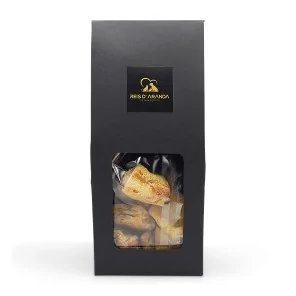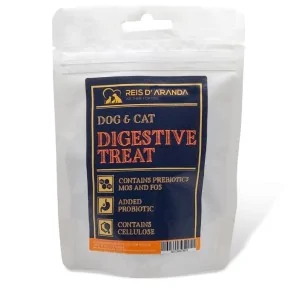Its name says it all: the Vienna blue rabbit comes from Austria. Not only is it beautiful with its shiny blue-grey...
THE PODHALE SHEPHERD DOG
INTRODUCTION
The Polish Podhale Sheepdog (also called the Tatra Shepherd) is a breed of mastiff introduced into the Tatra Mountains in southern Poland by Vlach shepherds, probably in the 14th century and used ever since as a guardian and guide of flocks.
THE ORIGIN OF THE POLISH PODHALE SHEPHERD DOG
The Podhale Shepherd is said to be descended from the Tibetan shepherd dogs that settled from the Balkans to the Caucasus. In the Tatra, Podhale region of Poland, these dogs were used to guard livestock from attacks by predators.
This breed survived the Second World War. However, they almost disappeared under communism as the population of shepherds declined. It was in 1960 that programmes were initiated to bring back the Podhale Shepherd.
THE STANDARD OF THE POLISH PODHALE SHEPHERD DOG
GENERAL APPEARANCE: His strong, compact build denotes power and mobility.
IMPORTANT PROPORTIONS: His body is shaped like a rectangle; that of the males is slightly shorter than that of the bitches.
HEAD: Slender, proportionate in size. Carried at medium height, both when the dog is in action and at rest.
CRANIAL REGION:
SKULL: The cranial vault is slightly convex in profile. The frontal furrow is not very marked.
STOP: Clearly marked, but not abruptly cut.
FACIAL REGION:
TRUFA: Of medium size, with well opened windows. Its colour is black.
HOCIO: Strong and gradually tapering. Its length is slightly longer than or equal to that of the skull. The muzzle is broad.
BELPHOS: Tight and well fitting. The rims are dark in colour.
TEETH : The dentition is strong and all teeth are regularly set. The articulation is scissor bite, although a pincer bite is acceptable.
EYES: Medium sized, slightly oblique and full of expression. The iris is dark brown in colour and the rims of the eyelids are also dark.
EARS: Set on at the level of the outer corner of the eye, or a little higher. Of medium length and rather thick. They are triangular in shape and well covered with hair. The outer front edge slightly touches the head. The auricle of the ear is mobile.
NECK: Muscular, of medium length, without dewlap. The mane is abundant. The topline of the neck rises above the topline.
BODY: Long and massive.
CROSS: Broad and clearly visible.
BACK: Straight and broad.
LOIN: Broad and well set on.
Croup: Oblique, sloping slightly downward.
CHEST: Deep ribcage, ribs sloping and somewhat flat.
BELLY: Very slightly tucked up.
TAIL: Not set on very high, carried low on the topline. When the dog is in action, it is raised above the back, but not curved. When the tail falls, it reaches the hock; its tip may be slightly curved.
LIMBS
FOREQUARTERS: Muscular, strong boned but not heavy, well laid back when viewed in profile.
OMPLATES: Slightly oblique and close to the body.
METACARPERS: Very slightly sloping.
HANDS: Compact, forming an oval foot like a relatively large fist. The interdigital spaces are hairy. The pads are strong, hard and darkly pigmented. The nails are strong, blunt, dark coloured.
HINDQUARTERS: Seen from behind, vertical; seen from the side, moderately angulated.
METATARSUS: Vertical.
FEET: With the same characteristics as the feet of the forelegs.
COAT :
HAIR: Short and dense on head, muzzle, front part of forelegs and on hindquarters from the hocks downwards. On the neck and trunk the coat is long and dense, straight or slightly wavy, harsh to the touch. The undercoat is abundant. On the neck, the mane is abundant. The thighs are also covered with abundant and long hair, as well as the tail where the hair forms a tuft.
COLOUR: Solid white. Small cream coloured patches are not desirable.
SIZE:
HEIGHT AT WITHERS
- Males, 65 - 70 cm.
- Females 60 - 65 cm.
FAULTS: Any departure from the foregoing points should be considered a fault and the seriousness with which the fault should be regarded should be in exact proportion to its degree and its effect upon the health and welfare of the dog.
- Frontal furrow too marked.
- Poorly pigmented nose or edge of lips and eyelids.
- Light coloured eyes called ‘bear eyes’.
- Entropion.
- Ears set high, set back or cropped.
- Neck carried horizontally.
- Croup too high.
- Tail always carried above the line of the back.
- Dewclaws.
- Absence of hair between the toes.
- Mane on the neck not very abundant and limbs showing little hair.
DISQUALIFYING FAULTS:
- Aggressiveness or extreme shyness.
- Any dog showing clear signs of physical or behavioural abnormalities.
- Poorly marked nasal-frontal depression.
- Pointed muzzle.
- Severe lack of teeth.
- Overshot or undershot mouth.
- Ectropion.
- Curly or silky coat.
- Absence of undercoat.
- Spotted coat.
- Nervousness.
- Fearful or frankly aggressive attitude.
N.B.:
- Male dogs should have two apparently normal appearing testicles fully descended into the scrotum.
- Only functionally and clinically healthy dogs, with breed typical conformation, should be used for breeding.
HEALTH OF THE PODHALE POLISH SHEPHERD DOG
Like the vast majority of large breeds, the Polish Podhale Shepherd Dog can suffer from hip and elbow dysplasia. Some dogs may also suffer from eye problems, especially glaucoma.
It is a hardy dog that needs space, exercise and walks with its owners. Ideally, it should be able to roam freely in a garden, as it can withstand both low temperatures and summer heat, its coat protecting it in both cases. It is advisable to brush the extensive coat regularly and during the moulting season to do so more frequently.
THE PERSONALITY OF THE POLISH PODHALE SHEPHERD DOG
The Polish Podhale Shepherd Dog is a shrewd and tenacious breed. At work he carries out his duties to the full without letting anyone or anything distract him. It is independent but supportive. As a pet he is faithful to his family and protects the members of the same. Gentle by nature. Relates well with other animals. He is able to share in harmony with children.
Must be brought up firmly (which does not mean violence) and accustomed to the family environment from puppyhood. The Podhale has a high sense of hierarchy and if the owner does not make it clear to him who is in charge from the beginning, the dog will take over as soon as he gets the chance.
CONCLUSION
Herding and guarding flocks is the profession of the Polish Podhale Sheepdog. He prefers to work alone and makes all necessary decisions on his own. He finds it difficult to listen to orders.
If you are looking for a guard dog with classical protection dog training, the Polish Podhale Sheepdog is therefore the wrong choice. He is a loyal companion and a family dog. It unconditionally defends its family and its territory.
Leave a comment
Log in to post comments
















